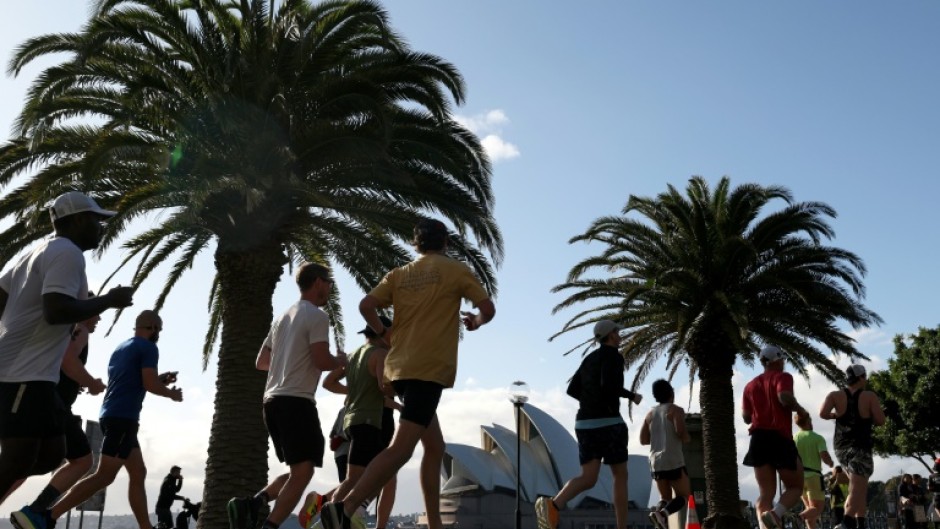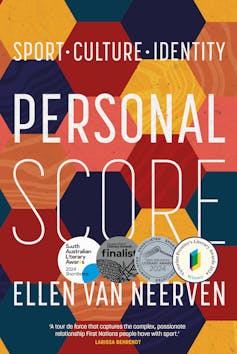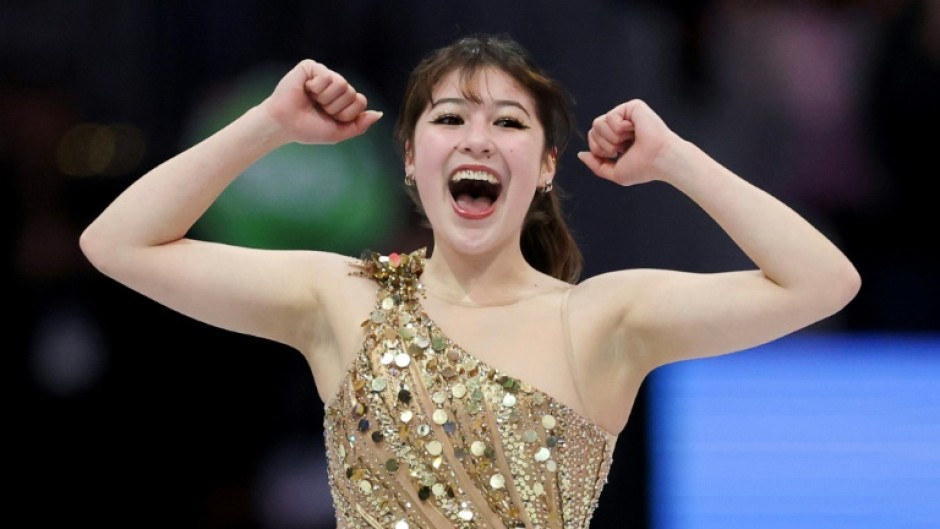
Wednesday, 23 April 2025
Skating comeback queen Liu says she can get even better for Olympics

Tuesday, 22 April 2025
Not just the stadium: what Brisbane Olympic organisers are planning for
Brisbane was awarded the Olympics and Paralympics more than 1,300 days ago, and much has happened in between.
On Tuesday, upbeat Queensland premier David Crisafulli revealed the 2032 Brisbane Olympic and Paralympic Games plan.
This came after a 100-day review by the Games Independent Infrastructure and Coordination Authority (GIICA).
More than 5,000 submissions were received from the general public. The review included topics such as precincts and transport systems, while evaluating topics such as demand and affordability.
So, what’s going to be happening in Queensland before, during and after the games?
The main event: venues
Get ready for the likes of Taylor Swift, Pink, Coldplay and others to finally come to Brisbane with the announcement of a new world-class 63,000 seat Olympic Stadium to be built in Victoria Park in Brisbane.
All indications are major codes, such as the Australian Football League (AFL) and cricket, are also very pleased, as they will have a new home replacing the outdated Gabba.
Other venues, both in South East Queensland and in regional areas such as the Gold Coast, Sunshine Coast, Cairns and Townsville, were also outlined.
One of these is a new 25,000-seat swimming complex at Spring Hill, making it one of the world’s best facilities.
As Australia is a swimming powerhouse with major medal hauls expected in 2032, this news was well received.
However, a few of the GIICA recommendations were not accepted. The government has announced rowing will take place in Rockhampton – and not interstate – in an existing flat water venue.
Why the delays?
There had been plenty of criticism of the decision-making delays on facilities and their locations. But the Queensland government’s 2032 Games Delivery Plan indicates there is no need to panic.
Previously, the International Olympic Committee chose a host city seven years out, but under new protocols, Los Angeles in 2028 and Brisbane in 2032 have been given 11 years to finalise planning.
Previous Australian games (Melbourne in 1956 and Sydney in 2000) only had seven years to organise their events.
In the case of Melbourne, several controversies erupted due to the costs of building a new stadium at proposed sites such as the Royal Showgrounds or Princes Park.
Eventually, politics and economics intervened, and a refurbished Melbourne Cricket Ground within an impressive Olympic Park precinct was agreed on.
In the case of Sydney, the original idea back in the 1960s was to host either the Commonwealth Games or the Olympic Games at Moore Park, an inner-city region home to the Sydney Cricket Ground, a golf course and parklands.
But many local residents were vehemently opposed to that suggestion, so other sites were sought.
Eventually, the uninhabited Homebush site was chosen in 1973. This was an unexpected decision because it was the most polluted environment in Australia and its remediation, however noble, would be an enormous challenge.
And so it proved.
When Sydney was awarded the games in 1993, timeline pressures prompted organisers to bulldoze toxic waste into mounds on site, where they were covered with clay and landscaped.
Meanwhile, the promised remediation of toxic waterways in Homebush Bay never proceeded.
All that said, the Sydney games provided tangible legacies. The Olympic Village is now the suburb of Newington, there are parklands and cycle paths for visitors, and from a sport perspective several facilities remain in use today. In 2024, more than 10 million people visited the Sydney Olympic Park precinct, attending sport, concerts, or participating in social activities.
Opportunities and hurdles
The initial hiccups associated with the Brisbane games have resulted in some interesting and healthy debate, but this major project now has a positive vibe.
There is more than enough time to build the new facilities (including the athletes’ villages), upgrade existing ones, build the necessary transport infrastructure, and ensure community engagement.
The “Queensland way” seems not only to be referring to a better games, but also the legacy that comes with it.
Generational infrastructure (for example, the upgrade of transport connectivity), housing (such as the conversion of the RNA Showgrounds and a multimillion dollar investment into grassroots clubs can enable the next generations of Queenslanders to compete.
Tourism and regionalisation of the games through a 20-year plan should ensure the impact of the games goes far beyond 2032.
Some fine-tuning is expected the next few years though, and there may be unforeseen issues that arise – here are some.
1. Beyond the 31 core sports that must feature, will new sports necessitate changes or additions to proposed venues? Host cities are now allowed to have 4-5 sports added to the program which could cause increases to the budget.
2. Will the federal government fund the games on the currently agreed 50-50 basis with the Queensland government? This currently sits at around $7 billion split two ways, but it is likely to rise based on cost over-runs on virtually all major builds across Australia.
3. Will there be some tweaking of chosen venues due to local issues, lobbying by Olympic sports, political decisions and other factors?
4. Will a global health issue (such as COVID during the Tokyo 2021 games) or a major world problem (such as the current Gaza or Ukraine conflicts) impact the games in some way?
The Brisbane games are following the footsteps of Melbourne 1956 (affectionately referred to as the “friendly games”) and Sydney 2000 (the “best games ever”).
The eventual Brisbane label has yet to be determined. But the Brisbane games will no doubt add to the Olympic folklore of Australia in their own unique way.![]()
H. Björn Galjaardt, PhD Candidate, The University of Queensland; Daryl Adair, Associate Professor of Sport Management, University of Technology Sydney, and Richard Baka, Honorary Professor, School of Kinesiology, Western University, London, Canada; Adjunct Fellow, Olympic Scholar and Co-Director of the Olympic and Paralympic Research Centre, Institute for Health and Sport, Victoria University
This article is republished from The Conversation under a Creative Commons license. Read the original article.
Friday, 11 April 2025
49-Year-old Becomes First Blind Woman to Swim English Channel: ‘Nothing is Impossible’
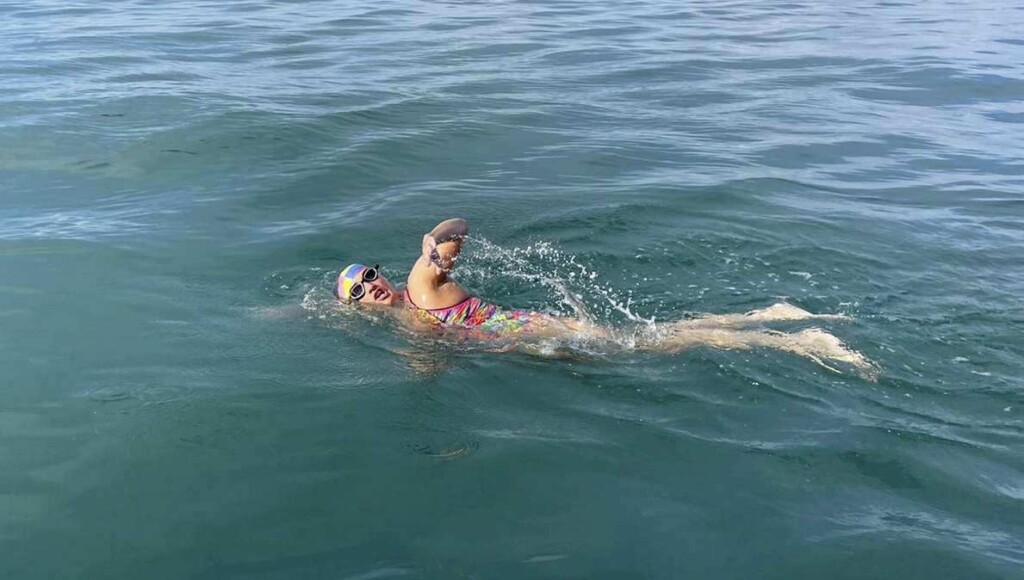 Melanie Barratt out in the English Channel – credit SWNS
Melanie Barratt out in the English Channel – credit SWNS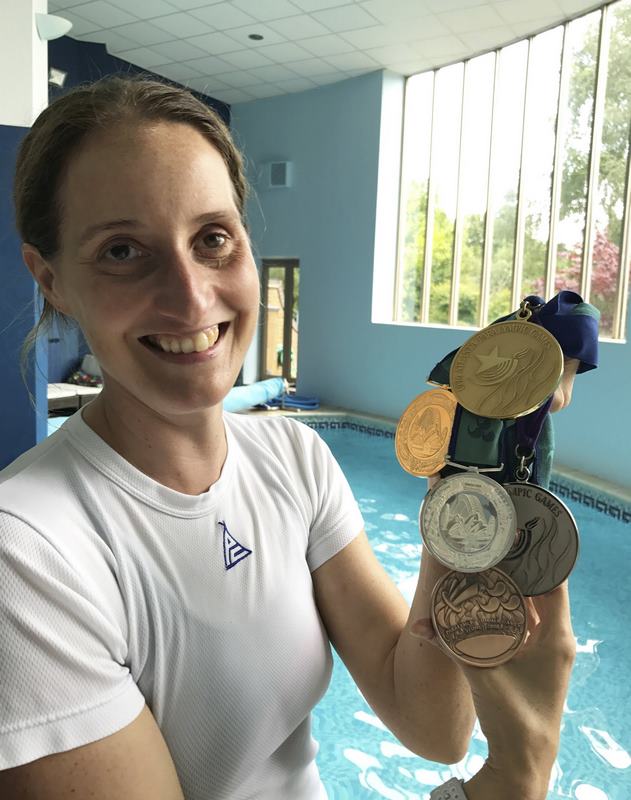 Melanie Barratt with her haul from the 1996 and 200 Paralympics – credit SWNS
Melanie Barratt with her haul from the 1996 and 200 Paralympics – credit SWNSMonday, 31 March 2025
Step length, a devastating finish and ‘springs in his spikes’: the science behind Gout Gout’s speed
 2024 Chemist Warehouse Australian All Schools Championships live stream, Australian Athletics
Dylan Hicks, Flinders University and roland van den Tillaar, Nord University
2024 Chemist Warehouse Australian All Schools Championships live stream, Australian Athletics
Dylan Hicks, Flinders University and roland van den Tillaar, Nord UniversityEvery now and then an athlete comes along who makes people wonder, “how are they so fast?”
Let me introduce you to Gout Gout.
Gout is a 17-year-old sprint sensation from Australia, whose blistering 100m and 200m times have drawn comparison to none other than Jamaican sprint legend Usain Bolt.
While he was edged out over 200 metres in Melbourne last weekend by 21-year-old Lachlan Kennedy – recent 60-metre world indoor silver medallist who is a rising sprinter poised to break the ten-second barrier for 100 metres – Gout’s performances continue to signal a bright future on the track.
In a seven-month period since last August, Gout has:
- won silver in the 200m at the World Junior Championships (20.60 seconds, -0.7 metres/second wind)
- broken Peter Norman’s long-standing Australian 200m record (20.04 seconds, +1.5m/s)
- two weeks ago in Brisbane, smashed through the magical 20-second barrier for the 200m, recording a world-leading 19.98 seconds (+3.6m/s), albeit wind-aided (anything greater than 2.0 metres/second is considered wind-aided).
But what makes Gout so fast?
Is it his explosive start, long stride, top speed or smooth technique?
The answer, as with all athletic outliers, is likely a combination of several unique attributes.
Let’s dive into the science.
The science of sprinting
Sprinting is an ongoing battle of force and mass.
Gravity is pulling the athlete’s body mass down. Meanwhile, the athlete must apply muscular force into the track to keep the body upright.
Research suggests the world’s fastest sprinters generate the highest ground reaction force relative to their body mass and apply it in the shortest period, in the right direction (more horizontally in acceleration and more vertically at top speed).
At 5'11" (180cm) and 66kg, Gout does not display the muscular physiques of past champion sprinters including Asafa Powell (Jamaica), Justin Gatlin (the USA), or Australia’s own Matt Shirvington. Yet his performances suggest is he redefining the archetype of elite sprinting.
For anyone who has run at school, you know the difficulty of holding your top speed for the duration of a 200-metre race.
But Gout defies logic. His speed endurance (maintaining speed) sets him apart from nearly all athletes.
And not just compared to his age group, although he currently sits second on the all-time under-18 200-metre list behind US runner Erriyon Knighton.
Gout’s speed endurance is up there with the best in 200-metre history: Bolt, Michael Johnson or Noah Lyles. Each of them has won multiple Olympic medals.
The fastest official 100-200 metre segment (the final 100 metres of the race) ever run in a 200-metre event is 9.16 seconds by American Lyles, on his way to winning the 2022 world athletics championships in Oregon (19.31 seconds overall).
In Gout’s recent performance in Brisbane, he completed this segment of the race in 9.31 seconds. Bolt and Johnson’s best 100-200 metre segment is 9.27 and 9.20 seconds respectively.
This statistic puts Gout in elite company.
The magic of Gout
Closer analysis of Gout’s performance highlights some sprinting anomalies.
He covers the first 100m of the race in 10.67 seconds, which is quite slow relative to his finishing time of 19.98.
For comparison, when Bolt broke the 200-metre world record in 2009 (19.19 seconds), he ran 9.92 seconds on the curve (and 9.27 seconds on the straight).
But once Gout enters the straight, his magic is on full display.
Gout has an average step length of 2.60 metres. Bolt’s average step length in his 100-metre world record performance was 2.45m, with Lyles displaying a similar result, 2.35m, in his 100-metre win in Paris.
This allows Gout to take between 3.75-4 steps for each ten-metre segment, which he covers at an average speed of 10.8m/s (or 38.8km/h). Like Bolt, his step length is a huge advantage over his competitors.
However, there is a trade-off with step length and step frequency.
Gout’s longer-than-average step length reduces his average step frequency to 4.15Hz (steps per second), much lower than Bolt who averaged 4.47Hz when at his best.
However, research highlights elite sprinters are reliant on either step length or frequency, and athletes should train to their strengths, rather than fixing their weaknesses.
So this may not be an area of concern for the teenager.
Gout also displays a unique coordination pattern in how he interacts with the ground: the way he strikes the track with his feet almost makes it look like he has springs in his spikes.
Well, we all do in a sense.
Elastic energy is stored and released in our Achilles tendon which acts as a muscle power amplifier during running.
Longer Achilles tendon length and stiffness play a huge role in sprint efficiency. This allows athletes to move at faster speeds for longer periods at a reduced energy cost, and may be another one’s of Gout advantages over his contemporaries.
A bright future
At 17, Gout’s performances are out of this world.
The way he generates and maintains speed challenges some conventional paradigms in sprinting – namely that raw power and muscle mass are the primary determinants of speed.
With most elite sprinters peaking in their mid-20s, Gout’s performances at this stage of his career are even more noteworthy.
His success likely highlights the role of his unique coordination patterns, biomechanics, technical efficiency, hard work and great coaching all bundled together.
Gout has already rewritten Australian sprinting history. Next up, he’s taking on the world.
Just don’t blink – he’s that fast, you might miss him.![]()
Dylan Hicks, Lecturer & Movement Scientist / PhD Sports Biomechanics, Flinders University and roland van den Tillaar, Professor in Sports Science, Nord University
This article is republished from The Conversation under a Creative Commons license. Read the original article.
Tuesday, 4 February 2025
Women love playing sport – and writing about it. Here are 6 fascinating and surprising sports books by women
Australians love a good sport story, because we love our sport.
While many of us think of sporting narratives playing out on fields and courts, there are some wonderful sporting stories captured in our country’s rich literature. And just as women have always been playing sport, they have also been writing about it.
Here are some books by women and non-binary writers for your summer reading list. They look at sport in a range of ways. Whether you enjoy histories, non-fiction, poetry, crime or even romance, there is a sporting story to suit all readers. These books seek to connect with diverse sports fans, or anyone looking for something a little different.
The first women’s Ashes
Marion Stell’s The Bodyline Fix: How Women Saved Cricket delves into a fascinating yet often overlooked chapter of cricket history. The book explores how Australian women cricketers in the 1930s played a crucial role in restoring the integrity of the sport, following the infamous men’s Bodyline series of 1932-33, which strained relations between Australia and England.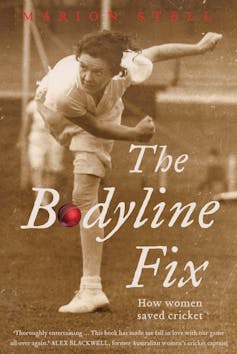
Stell is one of Australia’s foremost sports historians. She has gathered the stories of women’s sport in Australia, tracking down documents from scrapbooks kept by athletes and their families, mining storage units and garages for historical gems, and peering through miles of microfilm.
She is the author of the germinal book Half the Race: A History of Australian Women in Sport (1991), and her co-authored work with women’s football pioneer Heather Reid, Women in Boots: Football and Feminism in the 1970s (2020), is also excellent reading.
In The Bodyline Fix, Stell tells the story of the inaugural women’s test series, played against England in the summer of 1934-35. The series put women’s cricket in the spotlight. It brought together players from diverse backgrounds and social classes, and different levels of cricketing experience, to represent Australia. The women who played defied societal norms, family pressure and public scrutiny to pursue their passion. Their trailblazing spirit has contributed the strong Australian women’s cricket culture we have today.
The series is now known as the first women’s Ashes. The event’s 90th anniversary will be celebrated with a historic test at the Melbourne Cricket Ground, starting on January 30, 2025. Now is the perfect time to learn more about those pioneering women and their legacy.
Footy in literature
When we think of books about Australian rules football, we tend to think of the many memoirs, biographies and other non-fiction works documenting the game’s history, cultural influence and place in collective memory.
Despite the game being the country’s dominant football code, it has not strayed too far into the world of fiction. Fictional footy narratives are rare. Those written by women even rarer. In 2014, Ed Wright observed in the Australian that “for something so culturally unique, Aussie rules football is under-represented in our literature, especially given the obsession with the game of our UNESCO City of Literature, Melbourne”.

Yet around this time three intriguing novels written by women about Australian rules football were published: The Family Men by Catherine Harris (2014), Game Day by Miriam Sved (2014) and The Whole of My World by Nicole Hayes (2013).
These books depicted the ways women work to connect with the game and the joy that fandom can bring. They also examined the dark side of the sport, such as the effects of toxic masculinity.
More recently, Sarah Thornton published Lapse, a crime thriller set in rural Australia, where the protagonist, former lawyer Clementine Jones heads to the country and ends up coaching at the local footy club.
Lapse is an interesting look at Australian rural life, racial tensions in small communities and the dynamics of country footy through the tropes of the thriller genre. The novel has lots of suspense to keep you turning the pages. The plot is a refreshing take on the “stranger arriving in a small town with a secret”, featuring a woman protagonist who comes into a hypermasculine environment.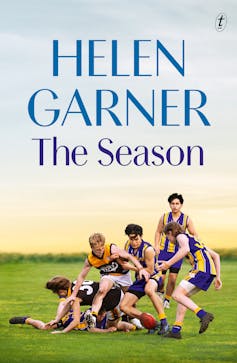
Another footy book to add to your reading list is the newly published The Season by Australian literary legend Helen Garner.
The Season depicts Garner’s experience following her grandson’s under-16s football team for a season. It is full of reflections on developing masculinity and the role of sport in crafting identity. Garner also writes about connection to her AFL team the Western Bulldogs and what being a supporter means to her.
The book is a valuable contribution to the footy book genre. Seeing the sports we love through the eyes of those not as close to the game helps us see it in a new light.
Matildas’ momentum
Who didn’t get caught up the excitement of the 2023 FIFA Women’s World Cup? One of the successes of the event was how many new fans were welcomed into the women’s football family.
Now we have some fantastic publications to speak to those new fans, celebrate the trailblazers, and reflect on the future of women’s football.
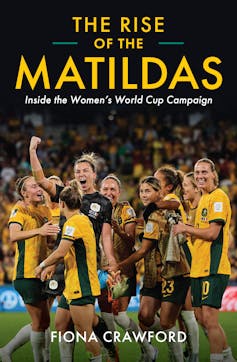
Football historian and academic Fiona Crawford has been busy over the last couple of years documenting the increased focus on Australia’s national women’s team the Matildas.
She published The Matilda Effect (2023) in the lead up to the 2023 FIFA Women’s World Cup. She also co-authored Never Say Die: The Hundred-Year Overnight Success of Australian Women’s Football (2019) with Lee McGowan, which is another great read.
Her recently released The Rise of the Matildas reflects on the Matilda’s World Cup experience. Crawford writes with expertise, consideration for the game’s pioneers, and respect for fans. Her engaging style instantly connects you to the historic moment that we hope will change Australian women’s football forever.
First Nations people and sport
Personal Score: Sport, Culture, Identity by Ellen van Neerven is a compelling blend of memoir, poetry and cultural commentary.
Through essays, reflections and poems, van Neerven explores the intersections of sport, culture and identity, with a focus on their lived experience as a queer, non-binary First Nations person.
Personal Score is incredibly powerful, alternating between intimate reflection and sharp political critique. It explores what it means to play sport on stolen land, to love football – and questions the game’s colonial history.
The book tells stories of trauma and resilience. Van Neerven’s considered writing not only provides hope that Australian sport can change to become more inclusive, it details practical steps we can all take.
Tennis anyone?
Romance fiction book sales are on the rise. You might be surprised to learn that sports romance has become a major player in this growing market – so much so that from February 28 to March 2, 2025, the world’s first Sports Romance Convention will be held in Minneapolis, USA.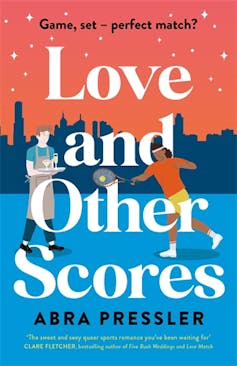
As we gear up for the Australian Open, a timely title is Abra Pressler’s Love and Other Scores. Pressler tells the story of an international tennis star with a secret coming to compete in Melbourne’s grand slam tournament. When he falls in love with a local, he finds he can’t hide his secret much longer.
Pressler’s novel explores how diverse sexualities are still stigmatised in men’s sport, at the same time as it depicts an environment where there are more intersectional identities. And of course, as is necessary in the romance genre, it gives us a “happily ever after” ending that allows us to imagine a sporting world where these issues are not only resolved, but celebrated.
Love and Other Scores is a sexy, queer romance with a diverse cast of characters. It is an excellent example of intersectional representation in sport and it is also a fun summer read.![]()
Kasey Symons, Lecturer of Communication, Sports Media, Deakin University and Lee McGowan, Senior Lecturer, Creative Writing, University of the Sunshine Coast
This article is republished from The Conversation under a Creative Commons license. Read the original article.
Friday, 31 January 2025
Aldcroft named England captain ahead of 2025 Women's Rugby World Cup
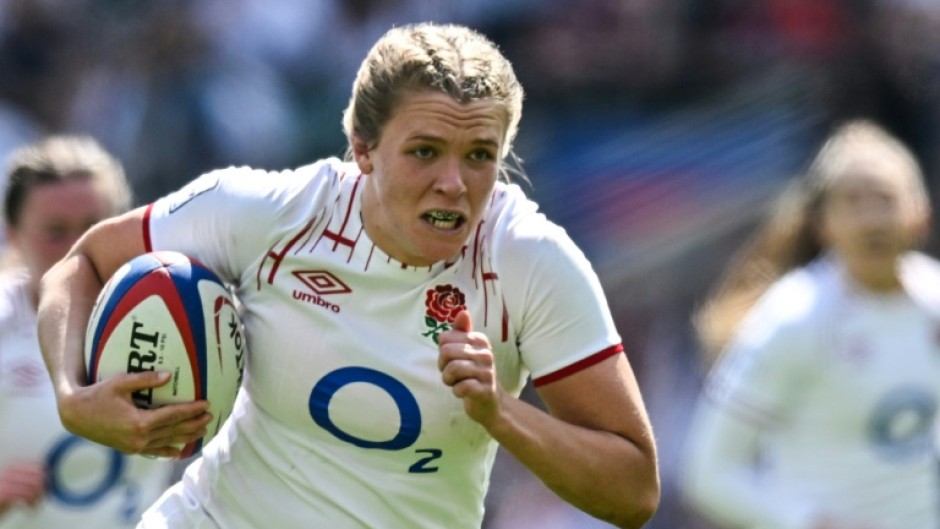
Wednesday, 29 January 2025
Chelsea sign Girma in reported world record deal for female footballer
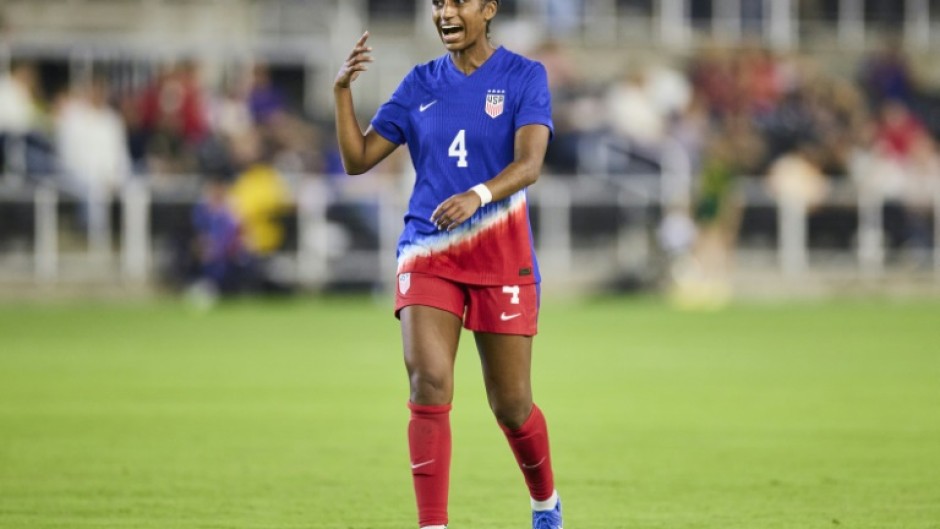
Monday, 27 January 2025
'Bound by love, happily ever after': Neeraj Chopra ties knot with Himani

Tuesday, 21 January 2025
Game, set, debate: why do women only play 3 sets in tennis?

Tennis fans are once again filling Melbourne Park for the 2025 Australian Open, after setting an all-time attendance record in 2024.
The Australian Open is one of four annual Grand Slam events, alongside the French Open, Wimbledon and US Open, which bring together the world’s best men’s and women’s players.
These athletes strive to claim not just the championship trophy, but precious ranking points as well as huge pay cheques: this year’s Australian Open prize pool is $A96.5 million and winners of the men’s and women’s singles events will each take home $3.5 million.
Why though, are the lengths of the men’s (five sets) and women’s (three sets) matches different?
Debating the differences
There has been long-standing debate about the appropriate length of men’s and women’s tennis matches.
In Grand Slam events, men’s matches extend to five sets, while women’s matches remain best-of-three. In most other tournaments, men and women both play best-of-three sets.
This difference is often raised when assessing equal prize money at some events, with some arguing women should not be awarded equal prize money if they play shorter matches.
Women are paid equally at all the Grand Slam tournaments but not all lower-level events.
Luckily, tennis prize money isn’t based on an hourly wage system – that’s why women don’t get less for dominating their opponents in two sets.
But what if the women played best-of-five?
Women’s history with five-set tennis
Women competed in best-of-five matches more than 130 years ago.
The United States’ national championships from 1891 to 1901 featured five set matches for women. The New York Times described the 1891 clash between Mabel Cahill and Ellen Roosevelt as being: “fought to the end with wonderful tenacity”.
But these women’s matches were shortened to best of three sets in 1901 by the United States National Lawn Tennis Association Council – a body made up entirely of men.
The decision was made despite the demonstrated ability for women to play five set matches, and does seem to parallel similar examples of men deciding with no evidence that women are not suited for sport of a particular nature.
This mindset led to the nearly 50-year ban of women playing soccer from 1921 to 1970.
In athletics, women were banned from competing in the 800-metre race from 1928 until 1960, at least partially because the media seemed shocked that in the 1928 Olympic Games in Amsterdam, some women fell to the ground in exhaustion after sprinting for gold in the 800-metre event.
It took until 1967 before the first woman ran the Boston Marathon – and Kathrine Switzer had to do so covertly, battling men trying to push her off the course. But her efforts led to the inclusion of the women’s marathon to the Olympics in 1984.
Back to tennis.
In 1984, the Women’s Tennis Association final featured a best-of-five set format from 1984 to 1998, famously highlighted by the decider between Monica Seles and Gabriela Sabatini in 1990 at Madison Square Garden.
Then in 1994, the Australian Open briefly considered introducing best-of-five finals for women, which would have been the first Grand Slam to do so.
Supporters of the move believed it would provide a more complete test of skill and endurance, and offer a more compelling spectacle. However, the experiment did not go forward.
Women can push the limits of physiology
The preparation and recovery management of women in tennis has improved further from when the Australian Open proposed “the experiment” in 1994.
But it should have never been a question of whether the physiology of women could handle longer events.
In fact, evidence supports women might be built for it. From marathon records continuing to fall to women excelling in ultra-endurance events, the longer the event, the better they perform.
So maybe the stamina needed for a best-of-five sets is ideal for women.
Reframing the question: are best-of-five sets better?
While society debates whether women should play five sets, a better question may be: do five sets achieve the best outcome for all players and fans in the age of shorter format versions of sports?
During five-set matches, evidence shows aspects of performance can plateau in the middle stages – first serve velocity has a parabolic approach, meaning servers hold back during the middle sets.
This is likely the athlete conserving energy, often leading to a less dynamic contest in the middle stages in preparation for the “last set”, raising the question of whether men should actually only play best-of-three sets.
Tennis fans will likely continue to debate the value of those third and fourth sets from the perspective of attention span versus tradition.
What is undeniable is that men have the opportunity to showcase their mental strength and stamina in best-of-five matches.
Why aren’t all players given this opportunity?![]()
Sophia Nimphius, Professor of Human Performance, Edith Cowan University and Caitlin Fox-Harding, Senior Lecturer/Researcher, Edith Cowan University
This article is republished from The Conversation under a Creative Commons license. Read the original article.
Monday, 20 January 2025
Why the Australian Open’s online tennis coverage looks like a Wii sports game
The 2025 Australian Open (AO) broadcast may seem similar to previous years if you’re watching on the television. However, if you’re watching online via the official Australian Open TV YouTube channel you’ll encounter a distinctly different kind of coverage.
The channel’s “AO Animated” coverage looks more like a Wii Sports tennis match than a real one, with players’ physical forms replaced with virtual avatars.
Fans that have viewed the live streams are divided, with comments ranging from “This is the best kinda live” to “What the hell is this? Why can’t we watch normal? This is utterly ridiculous”.
So what’s the answer? Why can’t we watch normal?
How does it work?
The system that creates the AO Animated streams uses 12 cameras that track the silhouette of the players. This data is then fed into a system and stitched to 29 points on an animated character – the player’s graphical reproduction. The result is a live stream with a two-minute delay that includes commentary and sound from the court.
For those who have seen it, you’ll notice the system is far from perfect. There are glitches with the ball, racquets vanishing and reappearing, clothes changing or appearing to have holes, and fingers remaining straight when they should be gripping the racquet. As Tennis Australia’s director of innovation, Machar Reid, notes, “It’s not as seamless as it could be.”
Although AO Animated was introduced last year, it has only recently become a major talking point among tennis fans. Many learned about the animated live streams through an X post by tennis reporter Bastien Fachan, who points them out as a way for the Australian Open to sidestep limits placed by current media rights agreements.
Nine has paid A$425 million for a five year deal (until 2029) that allows the network the domestic linear and digital rights to the Australian Open and lead-in events, including the United Cup.
Internationally, the BeIN media group has the broadcast rights for 24 countries across the Middle East and North Africa, while ESPN has held the broadcast rights for the United States and Canada since 1984 (and will remain these rights until at least 2031).
Yet the AO has found a way to sidestep these exclusive media rights deals by using animated avatars on YouTube – a decision that raises several questions about the future of sports broadcasting and media rights deals.
Future media rights
As of when this article was published, the AO Animated video of Botic van de Zandschulp playing Alex de Minaur had more than 35,000 views. The most viewed match, with more than 160,000 views, was between Andrey Rublev and Joao Fonseca.
But these are paltry numbers compared to the 1.9 million Australians who tuned into Nine’s TV broadcast of the night session on day three (in which Botic van de Zandschulp played Alex de Minaur).
A closer look at the ratings also reveals it is overwhelmingly older Australians who are tuning in, with 838,000 viewers aged 25–54, compared to 414,000 aged 16–39. You might suspect younger Australian are streaming the tennis via Nine’s video-on-demand platform, but even here an older viewership dominates.
It’s possible many young people are turning to other platforms such as YouTube, which reportedly had almost 21 million active users in Australia in 2024 (almost 80% of the population). In this light, what looks like an effort by Tennis Australia to dodge media rights deals could also be viewed as an effort to reach new, younger audiences.
It seems Tennis Australia’s Machar Reid had this in mind. He told The Guardian the AO Animated videos were targeting the “community that engages with animated or virtual or gaming products”.
This strategy makes sense. Millions of young people are already hooked on YouTube’s huge selection of gaming content. For instance, last year videos related to the viral Roblox game Dress to Impress were viewed more than 4 billion times in the US alone, according to YouTube’s data.
Similarly, more than 645 million people in the United Kingdom watched videos related to the video game franchise EA Sports FC in 2024. This number was even greater in the Middle East and North Africa, at 950 million.
AO is not the first
The AO is not the first to live-stream sports matches in which players are animated. Last year, North America’s National Hockey League used player tracking technology to stream a “MultiVersus NHL Face-Off” game. The players of Colorado Avalanche and the Vegas Golden Knights were replaced with Warner Brothers characters including Batman, Bugs Bunny and the Scooby Doo gang.
The National Football League also recreated a simulation of a live game in which players from the Cincinnati Bengals and Dallas Cowboys were replaced by Simpson’s characters. The entire look and feel of the broadcast reflected The Simpsons.
These US-based examples, together with the recent AO Animated coverage, suggest animated simulations could play a larger role in future media rights deals – and could provide media rights holders unique marketing and collaboration opportunities.
In the future we may see an expansion of the AO Animated live streams. It’s possible the Mii-style characters could even be replaced with popular characters, similar to the examples above. Such a change would further enhance Tennis Australia’s ability to collaborate with its media rights holders, both domestically and internationally.![]()
Marc C-Scott, Associate Professor of Screen Media | Deputy Associate Dean of Learning & Teaching, Victoria University
This article is republished from The Conversation under a Creative Commons license. Read the original article.
Thursday, 16 January 2025
Aldcroft named England captain ahead of 2025 Women's Rugby World Cup

Wednesday, 15 January 2025
Moeller wins super-G to record maiden World Cup victory
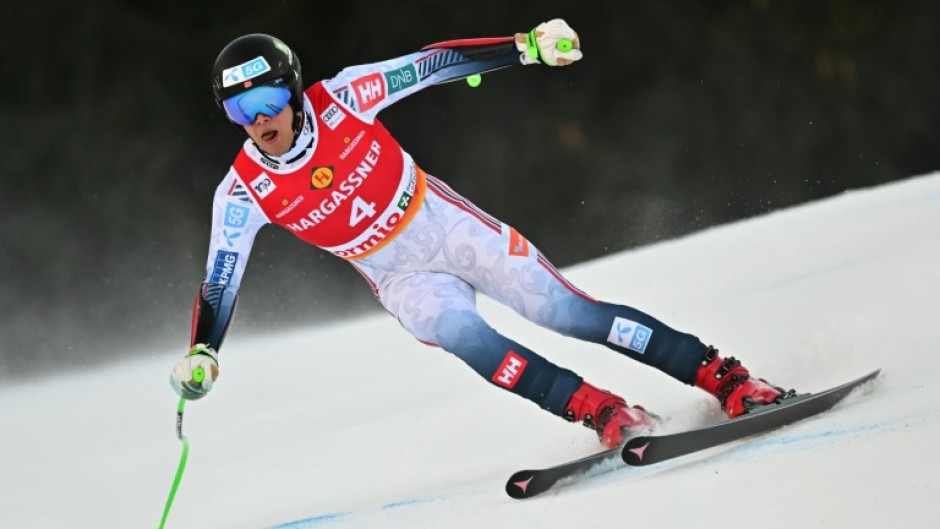
Monday, 13 January 2025
Neymar says 2026 World Cup will be his last
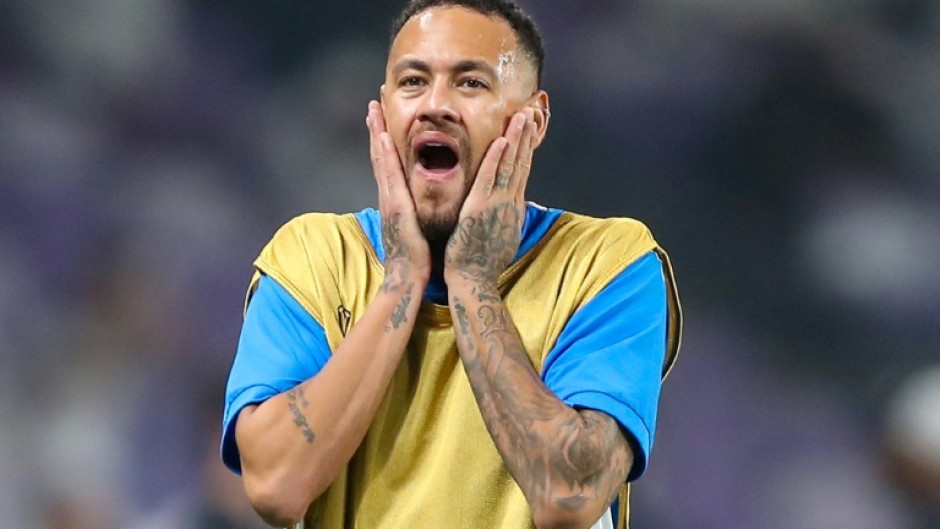
Friday, 27 December 2024
India Community Center team wins 15 medals at 2024 US Open Table Tennis Championship
- U-1900 Adult Rating event : 1rst place – Yash Anand
- U-1500 Junior rating Event : 1rst place – Benjamin lam
- U-1400 Junior rating Event : 1rst place – Benjamin Lam
- U-1300 Junior rating Event : 1rst Place – Shreyan Modak
- U-1200 Junior rating Event : 1rst Place – Shreyan Modak
- U-1400 Junior rating event : 2nd place – Shaarav Sunil
- U-1300 Junior rating event : 2nd place – Shaarav Sunil
- Hardbat Doubles : 2nd place : Ishaan Hingorani/Lalrin Puia
- U-15 Girls Doubles : 3rd place – Dariah Feng
- U-1400 Junior rating event : 3rd Place – Krish Gupta
- U-1000 Junior rating event : 3rd Place – Shishir K Mahesh
- U-2200 Rating event : 3rd Place – Yasin Musthafa
- U-2000 Junior Rating event : 3rd place – Shloak Hiremani
- U-1600 Junior rating Event : 3rd place – Benjamin Lam
- U-1300 Junior rating Event : 3rd Place – Siddharth Kodaty
Monday, 23 December 2024
Woods has 'long way to go' after latest back surgery

Friday, 13 December 2024
Teenage prodigy Gukesh D defeats Ding Liren to become youngest world chess champion
Eighteen-year-old Indian prodigy Gukesh Dommaraju has become the new world chess champion, winning the final game of the title match after a dramatic blunder from the reigning champ, China’s Ding Liren.
Gukesh is now the youngest world champion in chess history, and the first Indian to hold the title since Vishwanathan Anand lost it to Magnus Carlsen in 2013.
Ding was gracious in defeat, saying
Considering [my play], it’s a fair result to lose in the end. I have no regrets. I will continue to play, and I hope I can show the strength like this time.
For Gukesh, the victory fulfilled a childhood dream. At the age of 11, in a video clip that later went viral, he told an interviewer “I want to be the youngest world chess champion.”
In a post-match press conference, Gukesh said spotting Ding’s blunder “was probably the best moment of my life”.
The road to the title
Ding became world champion in 2023 after an unlikely journey. He almost missed qualifying due to COVID lockdowns in China, and even then only made it into the championship match when Russian grandmaster Sergey Karjakin was disqualified over his support for Russia’s invasion of Ukraine.
Ding is renowned for his kind demeanour and defensive skills, having once achieved a record-breaking 100-game unbeaten streak. However, after defeating Ian Nepomniachtchi to claim the champion’s title in 2023, he struggled both on and off the board. Plagued by fatigue and depression, he dropped to 23rd in the world rankings.
In stark contrast, Gukesh has been a force of nature in 2024. He led the Indian team to an historic gold medal at the biennial Chess Olympiad, personally achieving a performance rating of 3,056 – the highest at the event, winning the gold medal on the top board.
Drama on the board
The championship match – a series of 14 games held in Singapore and sponsored by Google – was marked by twists and turns. Ding was regarded as the clear underdog before play began, but he set the tone for tense battle when he pulled off a shock victory in game 1, playing black. In chess, the player with the white pieces has an advantage, so when games at the top level are not drawn it is usually the white player who comes out ahead.
Before game 14, Ding and Gukesh were tied with two wins each. It was widely expected the game would be a draw, setting the scene for a round of high-speed games to break the tie.
When the game began, Ding – playing white – achieved a small advantage out of the opening, but was unable to capitalise on it and instead settled for a technically equal endgame.
However, after four hours of play, just as the game seemed destined for a draw, Ding made a catastrophic blunder, handing Gukesh a decisive advantage.
On his 55th move, Ding offered a trade of rooks, attempting to simplify the position and steer the game towards a draw. However, this offered an opening for the young challenger to also trade off the remaining bishops and reach a winning king-and-pawn endgame. In the process, he secured his place as the 18th world chess champion.
Elite commentators such as former world champions Magnus Carlsen and Vladimir Kramnik and grandmasters Fabiano Caruana and Hikaru Nakamura criticised the quality of play throughout the match, with both players missing several key opportunities.
Following the final game, Carlsen labelled Ding’s fatal mistake “one of the worst blunders we’ve seen in a world championship.” Because the final position is a textbook chess endgame studied by all grandmasters in their youths, many expressed shock at the abrupt and anticlimactic conclusion to the sport’s most elite contest.
Yet the sheer drama of the three-week match, with its high stakes and emotional rollercoasters, kept millions of fans riveted across the globe.
The Carlsen question
Hanging over the world chess championship is the presence of 34-year-old Norwegian Magnus Carlsen, widely regarded as the greatest chess player of all time. (Disclosure: I once played a drawn game with Carlsen, at the 2016 Chess Olympiad.) In 2022, citing a lack of motivation, Carlsen relinquished the title of world champion.
However, Carlsen continues to play chess, and he is still number one in the International Chess Federation (FIDE) rankings. His presence casts doubt on the idea that the winner of the championship is “the best player in the world”.
Gukesh’s victory, while historic, doesn’t resolve this debate. With a chess rating of 2,777 after this match, he will remain outside the world’s top three by rating. (Chess ratings are based on the Elo system, a complicated method for calculating the relative skill levels of players based on their previous wins and losses.)
Remarkably, he is not even the highest-rated Indian. His 21-year-old compatriot, Arjun Erigaisi, is rated 2,801.
Yet Gukesh’s win may signal something larger: a generational shift, and the emergence of a new star in the chess universe.
In his post-match press conference, Gukesh acknowledged that “becoming the World Champion doesn’t mean that I’m the best player in the world – there’s obviously Magnus”.
Carlsen himself remarked that Gukesh had shown the potential to “establish himself as the number-two player in the world”, before adding “and who knows, maybe in the not-too-distant future, the number one”.
What’s next for chess?
The triumph of the 18-year-old Gukesh represents the dawn of a new era. His victory also underscores the growing influence of India – the gold medallists for both the Open and Women’s competitions at the recent chess Olympiad – in global chess.
For Ding, the defeat is a heartbreaking end to a short, challenging reign. Yet his resilience in reaching this stage, despite his personal struggles, has not gone unnoticed by fans around the world.
The championship itself, as a showdown between players from China and India – two nations with over a billion people each – has captured global attention and highlighted the game’s surging popularity. Chess has experienced a renaissance in recent years, fuelled by the pandemic-induced shift to online play and pop-culture events such as the Netflix drama The Queen’s Gambit.
Platforms such as Chess.com and Lichess have turned the game into a spectator sport, with live commentary from grandmasters such as Carlsen and Nakamura drawing huge audiences. For India, Gukesh’s victory could ignite a new wave of chess enthusiasm, cementing the country’s status as a rising superpower in the game.
As chess fans celebrate the rise of a prodigy, the future of the sport looks brighter than ever.![]()
David Smerdon, Assistant Professor, School of Economics, The University of Queensland
This article is republished from The Conversation under a Creative Commons license. Read the original article.
Tuesday, 26 November 2024
Sydney becomes seventh world marathon major
